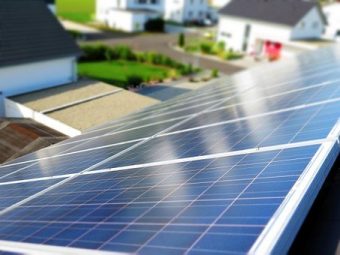
Imagine an electric grid powered by clean, renewable energy. Now imagine that this grid provides all the comfort and convenience consumers have come to expect as well as grid reliability and resiliency services that are similar to—or better than—conventional plants. That is the promise of the FlexPower project.
With support from the U.S. Department of Energy Grid Modernization Laboratory Consortium, FlexPower brings National Renewable Energy Laboratory (NREL) researchers together with other National Laboratories to develop a colocated variable hybrid generation power plant enhanced with energy storage at NREL’s Flatirons Campus. Participants include the Idaho National Laboratory (INL) and Sandia National Laboratories (Sandia).
As renewables displace conventional generation, hybrid renewable power plants combined with energy storage can transform variable resources such as wind and solar photovoltaics (PV) into fully dispatchable and flexible energy sources. These hybridized power plants will be capable of operating in day-ahead and real-time energy markets and providing essential reliability and resiliency services to the grid.
More:
Rethinking Renewables
“This research will help accelerate the adoption of utility-scale variable wind and PV resources by demonstrating how hybridization can smooth the transition to clean energy,” said NREL Chief Engineer Vahan Gevorgian. “For the power grid to economically and reliably integrate large amounts of variable renewable generation, it will require robust energy storage capabilities and a rethinking of the value renewable energy assets bring to the grid.”
To support this transformation, researchers will test a variety of energy storage systems, including pumped storage hydropower, battery, hydrogen, flow battery, kinetic, and ultracapacitor energy storage. In addition, the project will focus on advanced control strategies and resource forecast techniques.
Sophisticated controls can improve the dispatchability and availability of variable generation by taking advantage of the complementary nature of wind and PV resources and increasing capacity factors for renewable projects with minimum or, in some cases, no additional transmission buildup. Improved forecasting allows hybrid plants to participate in energy and ancillary services markets in the same way conventional generation plants do.
By combining generation, storage, advanced controls, and improved forecasting in hybrid plants, operators can achieve economies of scale by sharing infrastructure as well as siting and permitting costs. These plants can also provide the full spectrum of existing essential reliability services as well as new, evolving grid reliability services. For example, hybrid plants can provide self-black starts as well as power system black starts, can operate in islanded mode, and can participate in power system restoration schemes. And hybrid plants are scalable, ranging from small microgrids to large, interconnected power systems.
You can read the whole article HERE.
Source:

